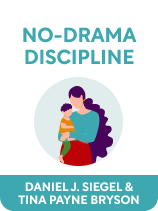

This article is an excerpt from the Shortform book guide to "No-Drama Discipline" by Daniel J. Siegel and Tina Payne Bryson. Shortform has the world's best summaries and analyses of books you should be reading.
Like this article? Sign up for a free trial here .
What is the difference between traditional forms of discipline and drama-free discipline? Is punishing your child the same as disciplining them?
In their book No-Drama Discipline, Siegel and Bryson believe that many parents misunderstand discipline to mean punishment. However, discipline should be about strengthening their growing brains and forming bonds.
Here is the difference between punishment and drama-free discipline.
What Is Discipline?
According to the authors, there are two goals of discipline. Immediate cooperation is the short-term goal of discipline: It involves getting children to stop doing what they shouldn’t be doing and redirecting them to a positive behavior. On the other hand, skill-building is the long-term goal of discipline: It involves helping children develop skills like empathy and emotional regulation that will serve them throughout their lives. As children build these skills, they’ll begin making better decisions, and over time they’ll need less discipline in general.
(Shortform note: These two goals don’t just apply to children—they also apply to how we use self-discipline as adults. For example, when you set an alarm for 5 AM to get up and exercise, you probably have two goals in mind: to work out that particular morning (a short-term, immediately beneficial goal) and to get into the habit of getting up early to exercise (a long-term, skill-building goal). Each time you choose to get up instead of sleeping in, you cement the habit further and make it easier to get up on time the next day—just like repeated discipline makes it easier for kids to behave properly.)
Disciplining kids often involves tears, yelling, and drama. In No-Drama Discipline, parenting experts Daniel J. Siegel and Tina Payne Bryson aim to empower parents to discipline their children without the drama, which creates the space to teach children, not just argue with them. This book builds on the lessons of the authors’ previous parenting collaboration, The Whole-Brain Child, but with a specific focus on discipline. (Don’t worry—you don’t need to have read The Whole-Brain Child to enjoy No-Drama Discipline!)
In this guide, we’ll learn the basics of the authors’ approach to discipline, including how to calm your child’s raging emotions and solidify your bond before redirecting them to a new behavior. Throughout the guide, we’ll also feature advice from other experts on parenting as well as scientific context to help explain why Siegel and Bryson’s advice is so powerful.
What Is Drama-Free Discipline?
According to the authors, drama-free discipline (or as the authors call it “the No-Drama Discipline approach”) is a way to discipline children while also strengthening their growing brains. When children have consistent, loving discipline, their brains form new, positive connections that create a foundation for healthy relationships and mental wellbeing later on.
This approach also reinforces the bond between parent and child, which makes kids feel safe—and when they feel safe, they’re able to focus their neurological resources on developing their growing brain, which will lead to better behavior in the long term.
| How No-Drama Discipline Promotes Secure Attachment As we’ve seen, the No-Drama Discipline approach is designed to nurture two things—the parent-child bond and the child’s brain development. These are both important factors in developing a secure attachment. While the authors don’t discuss attachment in depth in this book, Siegel discusses attachment in Parenting From the Inside Out (coauthored by Mary Hartzell). “Attachment” is the nature of the bond between children and their primary caregiver. When parents provide consistent, loving attention (even during moments of discipline), children ultimately develop a “secure attachment,” which means children internalize the message that they are safe, loved, and understood. Research shows that securely attached children tend to become trusting, open-minded, confident adults. Since Siegel and Bryson’s discipline methods are designed to nurture secure attachment, they’ll likely help to provide these benefits. |
How Does No-Drama Discipline Work?
Siegel and Bryson’s approach to discipline has three steps. The first step is preparation—putting yourself in the right frame of mind to discipline in a productive and healthy way. The second step is connection, which means establishing and reaffirming a deep bond with your child and reminding them of your unconditional love for them. The third step involves helping children shift from a negative behavior to a more appropriate behavior. The authors call this third step “redirection,” but for clarity, we’ll call it “teaching.”

———End of Preview———
Like what you just read? Read the rest of the world's best book summary and analysis of Daniel J. Siegel and Tina Payne Bryson's "No-Drama Discipline" at Shortform .
Here's what you'll find in our full No-Drama Discipline summary :
- Ways to empower parents to discipline their children without the drama
- Why you should discipline mindfully, with the goal of connecting with your child
- How to teach your child why a behavior is unacceptable






